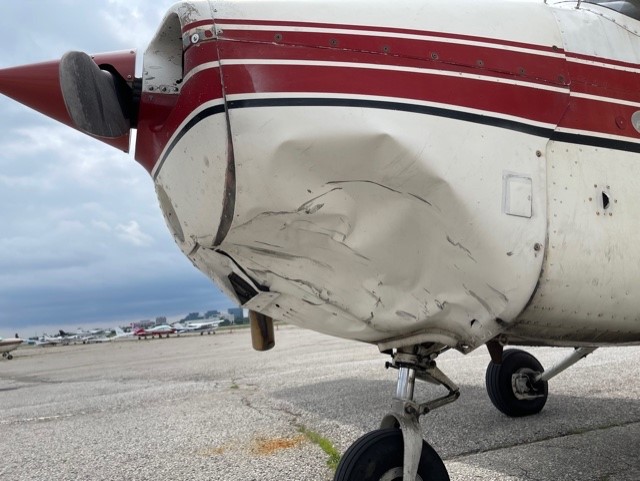more details need to be known to draw conclusions
like how far from the airport was the drone
but there is unlikely to be any consequences for an individual cop on duty
even when there's a body in the street, bullet holes in the back
30 cell phone videos of the shooting, the Blue Wall is in lock step
they're prolly looking for a way to fine and sue the pilot
Since they had done the base turn and were on final approach at 500', the plane was in very close (strike apparently happened in class E airspace within 1 nautical mile of runway). No drone operation at all permitted within that zone without requesting approval. I have no idea how approval for invading final approach works. TFR to shut the runway for an hour? Tell the police to do it the old way?
Did the cops have "advanced pilot certificates"? If so, wtf were they flying drones in the approach path without authorization? Half of york region is a hard drone no fly zone without written authorization.
Drone exclusion map:

nrc.canada.ca
901.47(2) of the Canadian Aviation Regulations states:
"Subject to section 901.73, no pilot shall operate a remotely piloted aircraft at a distance of less than: (a) three nautical miles from the centre of an airport; and (b) one nautical mile from the centre of a heliport.
This is a certified airport or heliport. The red shape on the map shows the area surrounding the heliport or airport where basic drone operations are not permitted
Typical circuit map in this document (I don't have access to proper plates):
Incident report (no incident number yet):

wwwapps.tc.gc.ca
At 1NM Northwest (NW) of Toronto/Buttonville, ON (CYKZ), a Canadian Flyers International Inc. Cessna 172N (C-GKWL) on a flight to Toronto/Buttonville, ON (CYKZ) was struck by a remotely piloted aircraft system (RPAS) while on final approach into CYKZ. The RPAS was part of a York Police Services operation in the area of Richmond Hill. No reporting of injuries or extent of the damage to the aircraft. NAV CANADA had not been advised of the RPAS operation.
UPDATE: Aviation Incident Report #17258: The instructor for a Canadian Flyers International Inc. Cessna 172N (C-GKWL) reported that they had just turned from base leg to final for Runway 15 at Toronto/Buttonville, ON (CYKZ) and were established and stable at 1100 ASL, or about 500 AGL, when they felt a jolt that pushed them back on their seat. They thought they had hit a large bird. They proceeded to land. There was no change in configuration or power since they were about to land. When exiting the aircraft, they were shocked to see a major dent on the left underside of the engine cowling. The airbox was also bent. A few hours later, a police detective confirmed a York Regional Police drone had struck their aircraft. The aircraft suffered major damage, including a propeller strike.
Info on YRP drone from 2015. Not sure if this was the drone destroyed in this incident:
Device to survey crash scenes, search for missing persons, police say

www.yorkregion.com
Two licensed officers, one observing the drone and the other using a tablet and stylus pen to control the flight path, operated the apparatus that’s worth $125,000, including the cameras.
It weighs 2.4 kilograms, is capable of vertical take offs and landings and can capture high-resolution images during the day or night.
Navcanada requires written authorization prior to flying a drone in Class E:
Remotely piloted aircraft systems (RPAS) — also known as drones or unmanned aerial vehicles (UAVs) — have to follow flight rules, too. To fly a drone in controlled airspace under NAV CANADA jurisdiction (Class A to E): • The RPA must be registered with Transport Canada • The operator must hold an advanced operations pilot certificate • The operator must receive written authorization from NAV CANADA






